This was published 1 year ago
These music festivals defied the trend and sold out. What’s the trick?
Defying the gloom, Strawberry Fields, Mundi Mundi Bash and Harbourlife have all sold out. Is there a pattern here?
By Karl Quinn
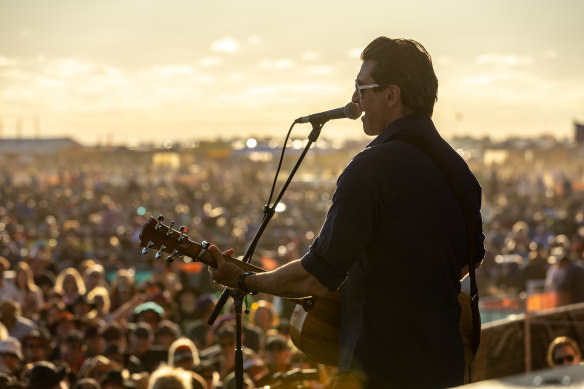
Pete Murray performs to a crowd of about 12,000 in the outback at last year’s Mundi Mundi Bash. Credit: Matt Williams
After a year marked by crisis, cancellations and collapse, the past week has brought some much-needed good news for the music festival sector.
Last Friday, demand for early-release tickets for Strawberry Fields, held on the banks of the Murray, was so strong it crashed the Humanitix website globally. The entire pre-release – 95 per cent of the event’s 13,500 tickets – were snapped up before the line-up had even been announced. The rest went on Monday, after the line-up was revealed, in minutes.
The same week, tickets for November’s Harbourlife in Sydney went in 15 minutes. In the outback, meanwhile, the Birdsville Big Red Bash wrapped up and its organisers began looking forward to next month’s Mundi Mundi Bash in Broken Hill, which will host 14,000 people in its third year, up from 12,000 in its second.
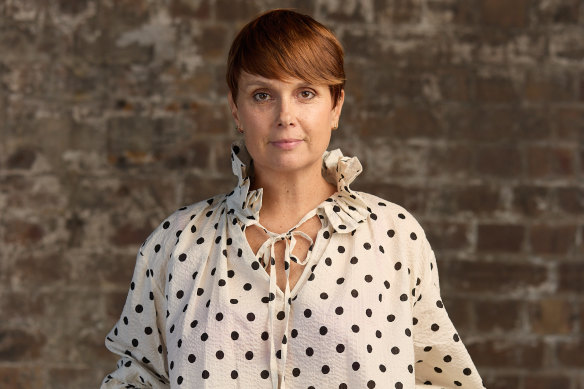
Adelle Robinson, managing director of Fuzzy Operations and chair of the Australian Festival Association.Credit: Sydney Biennale
Clearly, while the festival industry in general is doing it tough – with high-profile cancellations of events such as Falls Festival and Splendour in the Grass prompting a federal parliamentary inquiry – some events are making it look easy.
Is there a pattern here, something the sector as a whole might learn from? Yes, says Adelle Robinson, managing director of Fuzzy Operations, which stages Harbourlife and Listen Out, and chair of the Australian Festival Association.
“It’s the idea of the party being created around the venue and the vibe and the community, as opposed to being driven by who’s on the top two lines of the billing,” she says, “Trying to do stuff that is less artist-driven and more experiential is definitely something we’re going to be looking at.”
The crowd for Harbourlife is “tribal”, says Robinson. There are other festivals in the same category, she says, “like Meredith and Golden Plains, but it’s not the case with all shows”.
Harbourlife is a single-day house-music party on the inner-Sydney waterfront. Strawberry Fields, a multi-day event on the banks of the Murray River in November, focuses on electronic dance music. Mundi Mundi does a strong line in Oz rock and country – think Daryl Braithwaite, the Living End, Mark Seymour – and draws people from all around the country. But what each of these festivals has in common is a sense of community and the idea that people have come together to share a collective experience as much as a set of tunes.
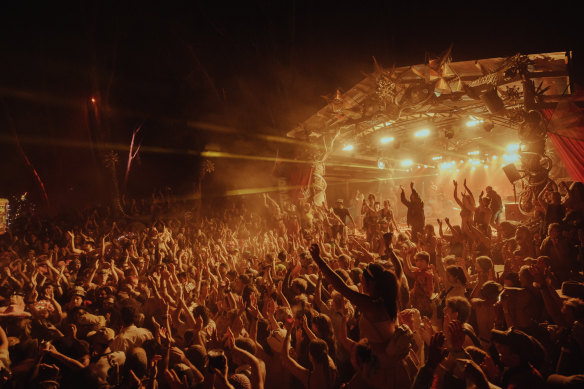
Strawberry Fields, 2023. This year’s event sold it in record time, mostly before the line-up was even announced. Credit: Max Roux
The other thing they have in common? Relatively small numbers.
Harbourlife is capped at about 8000, Strawberry Fields about 13,500 (plus volunteers, crew etc), Mundi Mundi 14,000. That compares with a daily capacity of 50,000 at Splendour in the Grass, before it was cancelled. The relative scarcity of tickets helps drive demand.
“The call to action and fear of missing out is something that is missing from festivals at the moment,” says Robinson.
The fact Strawberry Fields this year turns 15 was no doubt a factor in the “unprecedented” demand for tickets, says managing director Vicky Keeler. But so was familiarity with what attendees could expect.
“People were eager to buy without even seeing a line-up because they know the level of experience they’re going to get,” she says. “They’re willing to invest in the experience. It feels like a real landmark moment for the festival.”
Greg Donovan, whose Outback Music Festival Group promotes the Birdsville Big Red Bash (in central Queensland) and the Mundi Mundi Bash (40 kilometres north-west of Broken Hill), got into the game by chance after seeing demand for a John Williamson performance he had staged as part of an outback running event skyrocket.
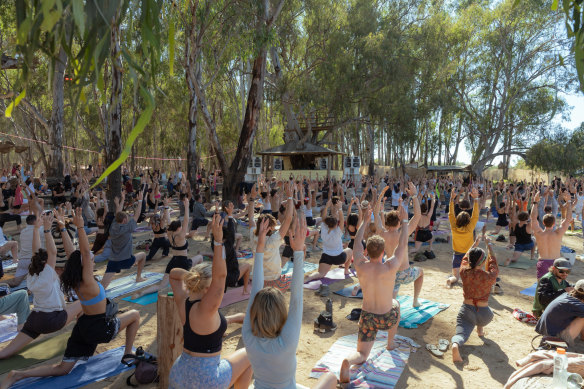
Offerings like early morning yoga at Strawberry Fields help craft an identity for these festivals beyond the music. Credit: Max Roux
When he was made redundant from his job in insurance he ignored his financial adviser’s advice to stick his payout into super. “I thought that sounded pretty boring, so I went out and hired Jimmy Barnes instead,” he says. “We got him out the next year and off we went.”
As with all festivals, the first rush to buy is a strong indicator of whether the event will make money or not. More than 60 per cent of tickets for this year’s Mundi Mundi were sold within seven days of going on sale last October. But it took until March for the event to sell out entirely.
“It’s a big trip for most people, so they’ve got to plan ahead,” he says. And at $730 a ticket it’s not cheap. While the audience is mostly 50-plus people with well-kitted campervans and touring tents, “it’s not the tight-arse grey nomads who are touring around the country, saving their money and eating Vegemite sandwiches”.
At Mundi Mundi they come together to camp, to take part in the Mundi Undies run, Blue Day (in which people dress in blue and collectively form the shape of Australia) or to do the Nutbush (they set a world record last year, with 6700 people doing the moves to 1973 Tina Turner hit Nutbush City Limits, and are aiming to better that this year).
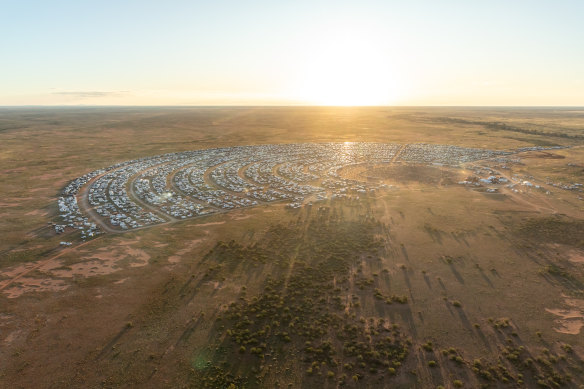
The outback setting is a key part of the draw for attendees at the Mundi Mundi Bash.Credit: Matt Williams
The music couldn’t be much more different at Strawberry Fields, but in many ways the ethos is much the same.
“There’s a bush spa where you can soak in Epsom salt baths looking out onto the river and get massages and mud facemasks,” says Keeler of her festival’s offerings. “There’s the Mirage Motel, where there’s Moroccan tea being served and you’re listening to worldly music and playing backgammon. And there’s workshops with talks, or ice baths, as well as obviously the dance floor and the large-scale art. I think people want to be inspired, and that comes through all different touchpoints, not just music.”
Keeping it (relatively) small is important to crafting and maintaining a sense of identity for each of these festivals.
“You can get into a trap once you’re trying to get a lot of people and trying to be everything to everyone,” says Robinson, who confesses that Listen Out – with about 150,000 tickets across six sites – is a tougher sell.
As for the state of the industry right now?
“Potentially this year and next year will be hard,” she says. “But I wouldn’t be in this industry if I wasn’t an optimist. We’ve seen ebbs and flows in the market since I’ve been doing it, for 25 years, and I do feel it’ll come back strong.
“There are shows that are selling out, so that tells us the demand is still there,” she says. “It’s not all doom and gloom.”
Contact the author at kquinn@theage.com.au, follow him on Facebook at karlquinnjournalist and Twitter at @karlkwin, and read more of his work here.
Find out the next TV, streaming series and movies to add to your must-sees. Get The Watchlist delivered every Thursday.